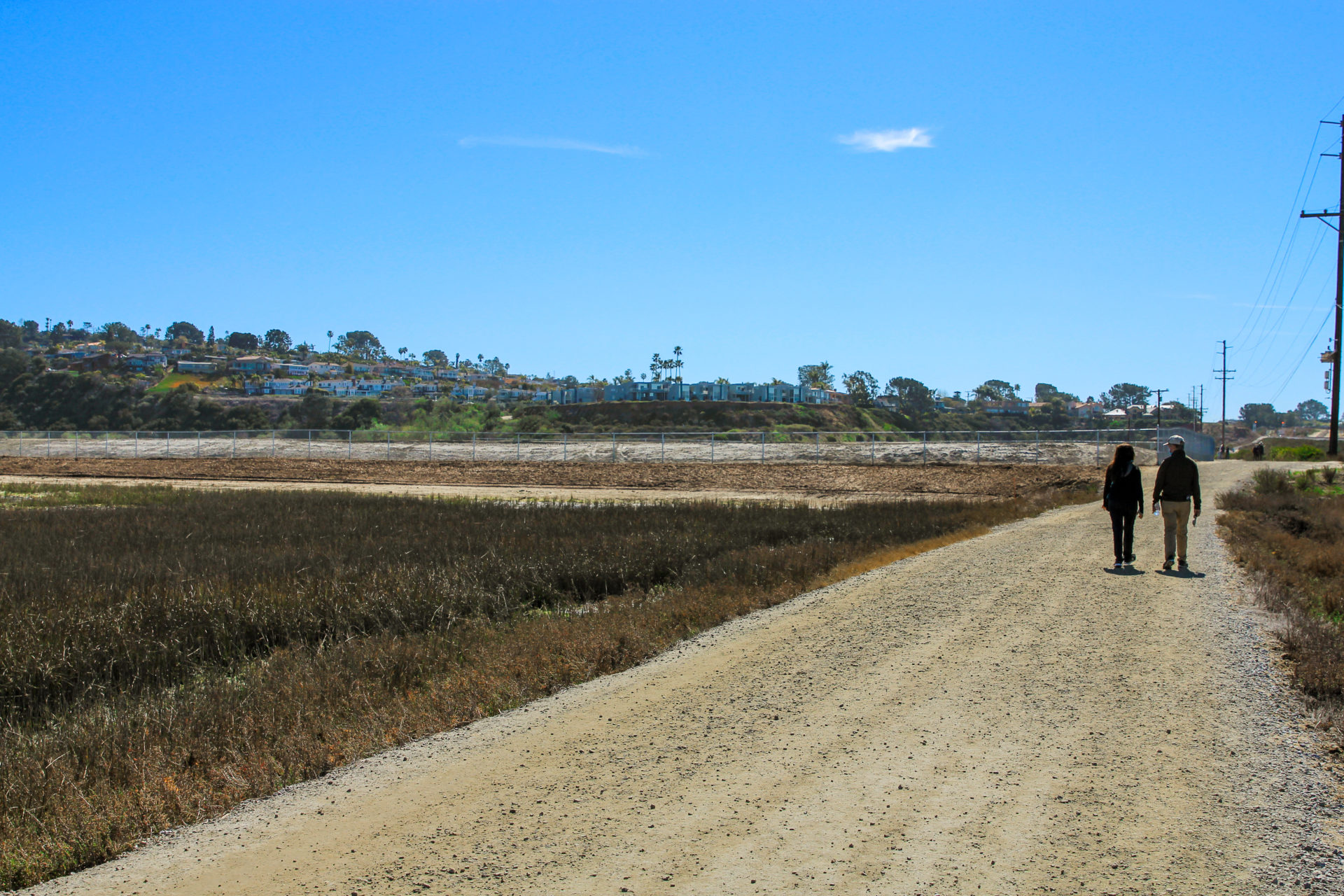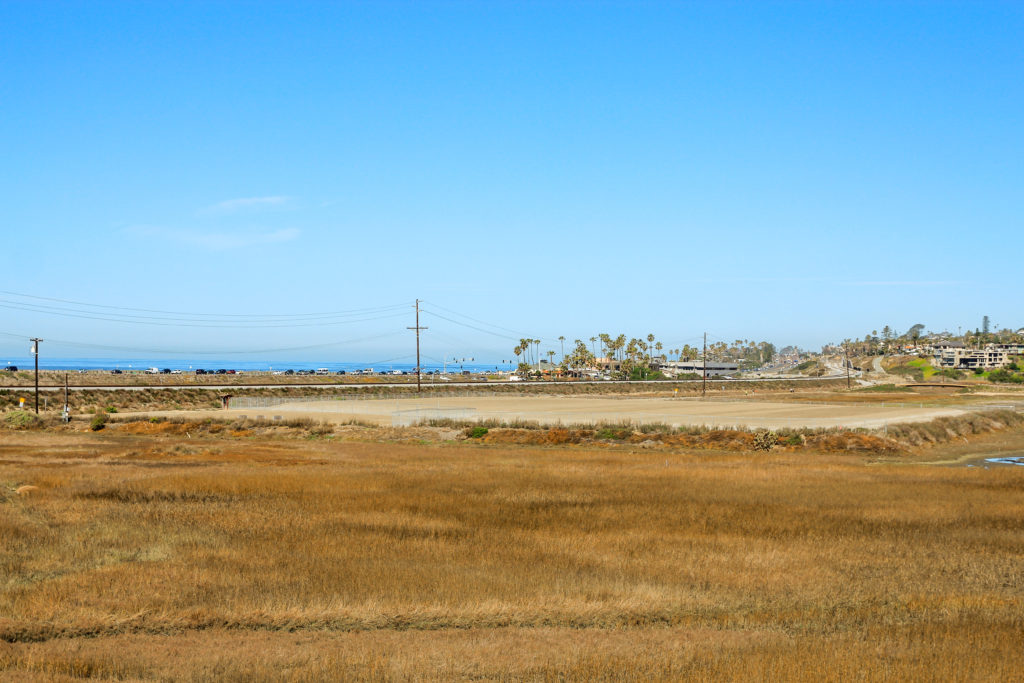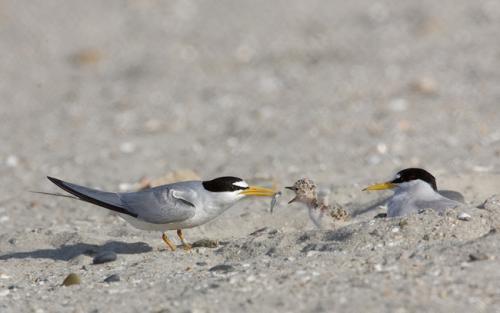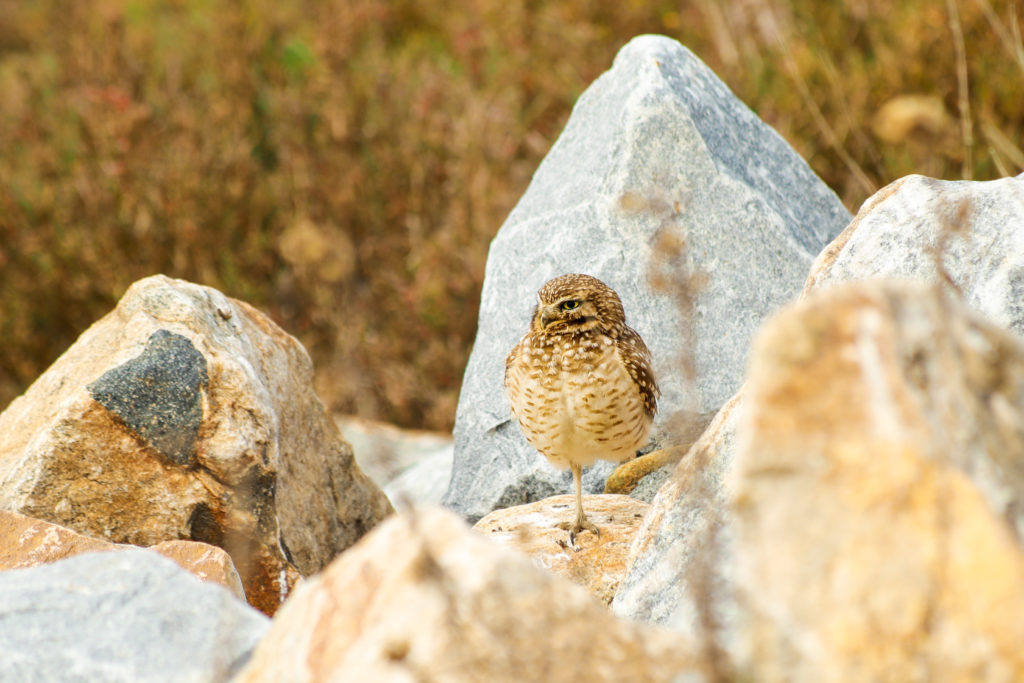Underwater Meadows of Life
Follow ( 0 Followers ) X Follow E-mail : * Follow Unfollow

Some of you are asking: What is that large sandy fenced area seen from the Pole Trail, located just off the bridges connecting the nature center to Solana Beach? This is a bird nesting area that is nearly complete. It is high enough — about 14 ft. above sea level — for birds to see the sand from the coast, over the railroad tracks, when they are flying low.

Above: Nearly 4-acres of sand is in the final stages of becoming ideal habitat for birds, especially those that need uninterrupted havens. This sandy area is located in the Central basin of San Elijo Lagoon Ecological Reserve.

Above: Endangered California Least Terns (Sterna antillarum browni), photo by Chris Mayne
California Least Terns, for example, are particular about the land they decide to nest on. They need a clean, sandy area free from predators, pets and people; something reminiscent of what California beaches and coastal strand habitat looked like before modern times. Loss of habitat is why they are in danger of extinction. We are hopeful these tiny terns find that nesting here is ideal!
This nesting area is elevated above the adjacent trail to give birds privacy. For background on this, and other salt marsh refuges in the reserve, read our story Sand + Soil Elevations for Rising Seas.
Also from the Pole Trail area, visitors are delighting in seeing a Western Burrowing Owl in flight and at rest. This is a California Species of Special Concern, due to loss of habitat. It is also one of many bird species you can see in this area.

Above: Western Burrowing Owl (Athene cunicularia hypugaea) pictured along the Pole Trail area
The burrowing owl does not live in trees, and it is not nocturnal. It makes its nest underground and is active both day and night. Its peak breeding season occurs in April and May.
Just one leg? This owl has two legs, no worries. Many species of birds stand on just one leg, while keeping the other leg tucked up into their feathered bodies for warmth. Yes, their feet get cold too! One leg down reduces heat loss.
Enjoy the views!
Thank you for supporting Nature Collective. Each of you are nature heroes.
Your continued presence helps us to improve the lands and waters we all need.
FEBRUARY Gifts
Bob + Lois Chaddock*
Cheryl Gaston
Bernhard Geierstanger
Peter Family Charitable, Schwab Charitable
Alan Russell
Melanie Schwab
Seiber Family Fund at Rancho Santa Fe Foundation*
In honor of
Claudia Comins + Robert Friedman, in honor of Edie Berendsen
Corporate
Dowling & Yahnke* in honor of Matt + Daniel Adams
Make a gift today!
We exist to drive a passion for nature, for all. We believe that if we help people discover a passion for nature, they will want to protect and value everything it has to offer.
Follow ( 0 Followers ) X Follow E-mail : * Follow Unfollow